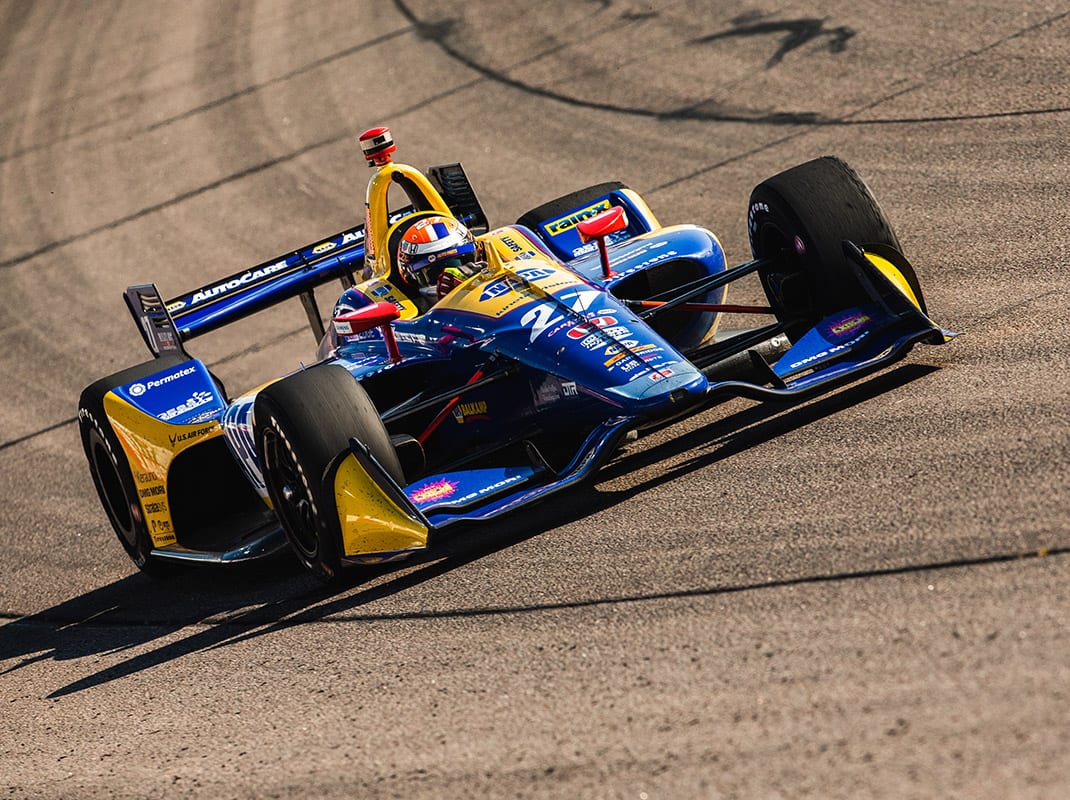When it comes to racing style, Rossi believes everything depends on the particular race track where the series is competing.
“Sometimes, we are all pretty much on the same thing and other times we are not,” Rossi told SPEED SPORT. “We all try to learn from each other. Hopefully, we are able to use the advantage of having five cars to work with so if one car is doing well, all four of the other cars can follow suit and get into the top five.
“It’s pretty straightforward. I’ve been working with Marco, Ryan and Zach for three years now so we know the things we can take from each other and the things we can’t,” Rossi added. “Colton was really involved in our team last year as well. These are all guys we are all pretty familiar with. Once you know a particular driver’s likes and dislikes; pros and cons, it’s pretty easy to know what you are looking for. It’s not that big of a deal at all.”
Engineers have thousands of data points collected by computer programs and sensors that feed the information from the race car to the engineering staff. Each engineer has to determine what that data is telling them about the setup of the race car.
A team debrief is usually after practice and qualifications and sometimes before the race. In the debrief, they collectively talk about what works and what changes are needed for better performance.

“Generally, you start off with the premise of trying to be as similar as you can,” Garrett Mothershead, Marco Andretti’s race engineer, told SPEED SPORT. “It leads to more communication. Then, we will branch off to different paths of development based on our driver’s needs and things we need to do as a team. Then, we will come back together.
“We generally know the offsets that you have to have from one driver to another,” Mothershead said. “If I’m looking for something on one end of the car, I may go ask Alex. If I’m looking for something on the other end of the car, I may go talk to Ryan. We know each other well enough that you can pick and choose and filter the information from those guys to find what you need.”
Using that information correctly is also important.
“The debriefs become overwhelming because they take two hours,” Hunter-Reay said. “That is what we are up to now. We have so many talented drivers and talented engineers. It’s at our disposal to use the information correctly.”
“It’s all how you use the information,” Rossi said. “The more information you get, if you use it appropriately, is a benefit. You have to know the information you are getting, and you have to filter it through the noise. You have to know what works for you in that moment and make it a benefit.”
Translating the data is very important. But perhaps the most important trait of all on this team is the ability to communicate that seemingly endless information among individuals.
“I don’t think we have a flow of information problem,” Bryant said. “The systems we have in place for sharing and having those available for all the different cars is very open. The engineers are open with each other in terms of seeing what everybody else is doing. We try to make the cars as much the same as we can, really. There are little test ideas that pop up and we try to communicate that. I think everybody gets treated as fairly as possible in terms of equipment.
“Generally, the setup direction moves in the direction it needs to go based on what everyone has done in practice,” Bryant added. “Sometimes, there is strength and weakness in having such a big group.
“Not everybody is going to roll out the same car, are they? When you do have a big swing like that, it comes down to the consensus of what everybody thinks are sensible and then each team has choices they make for themselves that make sense for that team and that driver.”
